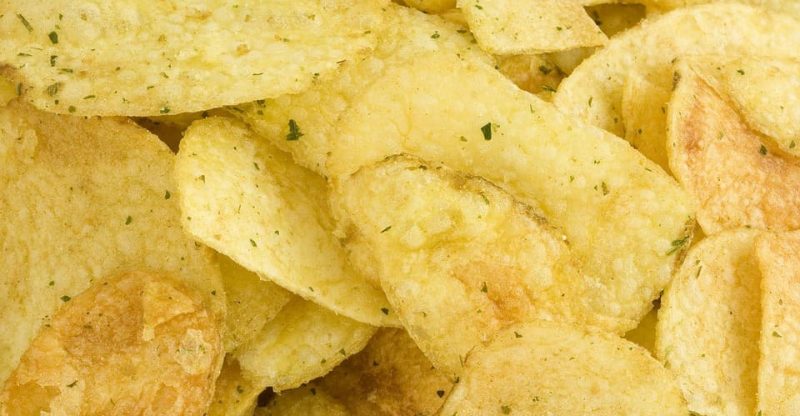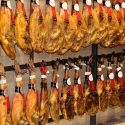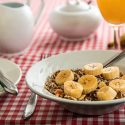What is Butylated Hydroxyanisole (BHA) (E320) in food: Uses, Safety, Side effects

Made of | Production | Uses | Safety
Butylated hydroxyanisole, also known as BHA, is a synthetic phenolic antioxidant to prevent the rancidity in edible oils & fats-containing food, also a chemical preservative with the European food additive number E320.
BHA is commonly synergy with other phenolic antioxidants, such as butylated hydroxytoluene (BHT), tertiary-butyl hydroquinone (TBHQ), and propyl gallate (PG), and/or combine with ascorbic acid, citric acid, and phosphoric acid to have a better antioxidative effect.
What is BHA made of?
Different with other synthetic phenolic antioxidants, food grade BHA is a mixture of two isomers: 2-tert-butyl-4-hydroxyanisole (2-BHA) and 3-tert-butyl-4-hydroxyanisole (3-BHA, not less than 85%). The antioxidant effect of 3-BHA is 1.5 to 2 times stronger than 2-BHA.

From Wikipedia
How is BHA made?
Commercial BHA can be produced by reacting 4-methylphenol (p-cresol) with tert-butyl alcohol using a catalyst.

Specification
| Appearance | White to slightly yellow waxy with a faint characteristic odor |
| Other names | Butyl hydroxyanisole, tert-butyl-4-hydroxyanisole, tert-butyl-4-methoxyphenol |
| CAS number | 25013-16-5 |
| Chemical formula | C11H16O2 |
| Molecular weight | 180.25 |
| Solubility | Insoluble in water, freely soluble in ethanol, propylene glycol, food fats and oils |
What’re the Uses of BHA?
BHA is used as an antioxidant and preservative in food, pet food, cosmetics, and so on. Its antioxidative mechanism is different with another kind of antioxidant (e.g. erythorbic acid, sodium erythorbate and ascorbic acid), which protect food from oxidation by reacting with oxygen to reduce its content in food.
Phenolic antioxidants (BHA, BHT, TBHQ, and PG) preserve food from oxidative deterioration through the way of inhibiting free radical autoxidation by providing hydrogen free radicals. Learn more the mechanism.
The following processed food may contain BHA:
- Frying oil
- Shortenings
- Butter
- Lard
- Cereals
- Chewing gum
- Margarine
- Dehydrated potatoes
- Baked foods
- Fat-soluble vitamins
Is BHA Safe to Eat?
Yes, the safety has been approved by the authorized parties, e.g. FDA, EFSA and JECFA. However, compared with BHT and TBHQ, BHA is controversial for its possible side effects, as it is classified in “Group 2B” which means “possibly carcinogenic to humans” by the International Agency for Research on Cancer (IARC). (1)
FDA
BHA is generally regarded as safe (GRAS) (2) , classified as a preservative and can be used as an antioxidant alone or in combination with BHT in shortenings, dry breakfast cereals, processed potato products and other foods with the maximum usage ranges from 2ppm to 1000ppm. (3)
EFSA
Butylated hydroxyanisole (E320) is listed in Commission Regulation (EU) No 231/2012 as an authorised food additive and categorized in “ additives other than colours and sweeteners” (4).
Safety re-evaluation in 2011
EFSA concluded BHA was no genotoxicity but revised the ADI from 0.5 mg/kg bw/day (established by JECFA and SCF) to 1.0 mg/kg bw/day due to the proliferative changes caused at high doses in the rat forestomach from studies of long-term toxicity and carcinogenicity. (5)
Approved uses
Its application is alone or in combination with TBHQ and propyl gallate, with the maximum level “25-400mg/kg”.
JECFA
Function Class: food additives, antioxidants. (6)
Acceptable daily intake: ADI “0-0.5 mg/kg bw” set in 1998. (7)
Conclusion
Now you may have a knowledge of the fat soluble preservative & antioxidant – butylated hydroxyanisole (E320), from the following aspects:
- Manufacturing process
- Uses
- Safety
- Side effects
If you have any questions or remarks about this additive, feel free to let me know in the comments.



Is 320 safe in fish oil supplement
Hi Kumar,
E320 is generally regarded as safe.
What generally is the amount of bha & bht used in foods (lard for example)? Without knowing the concentration in foods it isn’t possible to determine daily dose limits. Food labels state that the product contains bha, but doesn’t say how much.
E320 is not safe. Just learning they add this to the cosmetics & makeup. Not safe but probably hard to avoid it, as it must be in many products.